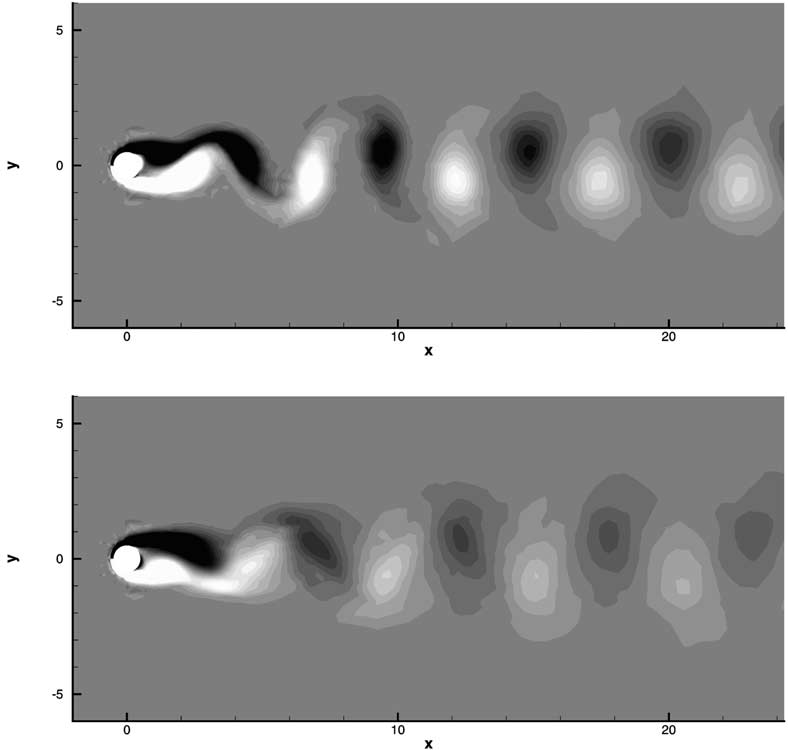SCI Publications
2003


T. Tasdizen, R.T. Whitaker.
“Feature preserving variational smoothing of terrain data,” In IEEE Workshop on Variational, Geometric and Level Set Methods in Computer Vision, October, 2003.


X. Tricoche, G. Scheuermann.
“Topology Simplification of Symmetric, Second Order 2D Tensor Fields,” In Geometric Modeling Methods in Scientific Visualization, Springer, Berlin, pp. 171--184. 2003.


R. Van Uitert, D. Weinstein, C.R. Johnson.
“Volume Currents in Forward and Inverse Magnetoencephalographic Simulations Using Realistic Head Models,” In Annals of Biomedical Engineering, Vol. 31, pp. 21--31. 2003.


R. Van Uitert, C.R. Johnson.
“Influence of Brain Conductivity on Magnetoencephalographic Simulations in Realistic Head Models,” In The 25th Annual International Conference of the IEEE Engineering In Medicine And Biology Society, Vol. 3, pp. 2136--2139. September, 2003.


D.M. Weinstein, J.V. Tranquillo, C.S. Henriquez, C.R. Johnson.
“BioPSE Case Study: Modeling, Simulation, and Visualization of Three Dimensional Mouse Heart Propagation,” In International Journal of Bioelectromagnetism, Vol. 5, No. 1, pp. 314--315. 2003.


C. Wyman, C.D. Hansen.
“Penumbra Maps: Approximate Soft Shadows in Real-Time,” In Eurographics Rendering Symposium, Belguim, pp. 202--207. 2003.


D. Xiu, G.E. Karniadakis.
“Modeling Uncertainty in Flow Simulations via Generalized Polynomial Chaos,” In Journal of Computational Physics, Vol. 187, No. 1, pp. 137--167. 2003.
DOI: 10.1016/S0021-9991(03)00092-5
We present a new algorithm to model the input uncertainty and its propagation in incompressible flow simulations. The stochastic input is represented spectrally by employing orthogonal polynomial functionals from the Askey scheme as trial basis to represent the random space. A standard Galerkin projection is applied in the random dimension to obtain the equations in the weak form. The resulting system of deterministic equations is then solved with standard methods to obtain the solution for each random mode. This approach can be considered as a generalization of the original polynomial chaos expansion, first introduced by Wiener [Am. J. Math. 60 (1938) 897]. The original method employs the Hermite polynomials (one of the 13 members of the Askey scheme) as the basis in random space. The algorithm is applied to micro-channel flows with random wall boundary conditions, and to external flows with random freestream. Efficiency and convergence are studied by comparing with exact solutions as well as numerical solutions obtained by Monte Carlo simulations. It is shown that the generalized polynomial chaos method promises a substantial speed-up compared with the Monte Carlo method. The utilization of different type orthogonal polynomials from the Askey scheme also provides a more efficient way to represent general non-Gaussian processes compared with the original Wiener–Hermite expansions.
Keywords: Polynomial chaos, Uncertainty, Fluids, Stochastic modeling


D. Xiu, G.E. Karniadakis.
“A New Stochastic Approach to Transient Heat Conduction Modeling with Uncertainty,” In International Journal of Heat and Mass Transfer, Vol. 46, No. 24, pp. 4681--4693. 2003.
DOI: 10.1016/S0017-9310(03)00299-0
We present a generalized polynomial chaos algorithm for the solution of transient heat conduction subject to uncertain inputs, i.e. random heat conductivity and capacity. The stochastic input and solution are represented spectrally by the orthogonal polynomial functionals from the Askey scheme, as a generalization of the original polynomial chaos idea of Wiener [Am. J. Math. 60 (1938) 897]. A Galerkin projection in random space is applied to derive the equations in the weak form. The resulting set of deterministic equations is subsequently discretized by the spectral/hp element method in physical space and integrated in time. Numerical examples are given and the convergence of the chaos expansion is demonstrated for a model problem.
Keywords: Uncertainty, Stochastic modeling, Polynomial chaos, Transient heat conduction, Random medium


P. Yushkevich, S. Joshi, S.M. Pizer, J.G. Csernansky, L. Wang.
“Feature Selection for Shape-Based Classification of Biological Objects,” In Inf Process Med Imaging, Vol. 18, pp. 114--125. July, 2003.


P. Yushkevich, P.T. Fletcher, S. Joshi, A. Thall, S.M. Pizer.
“Continuous Medial Representations for Geometric Object Modeling in 2D and 3D,” In Image and Vision Computing, Special Issue on Generative Model-based Vision, Vol. 21, No. 1, pp. 17--27. 2003.


K. Zyp.
“The Transfer Operator for Multigrid on Inverse Bioelectric Field Problems,” SCI Institute Technical Report, No. UUSCI-2003-001, Note: Masters thesis, University of Utah, May, 2003.
2002


M. Benedikt, J. Freire, P. Godefroid.
“VeriWeb: Automatically Testing Dynamic Web Sites,” In In Proceedings of 11th International World Wide Web Conference 2002, 2002.


P. Bohannon, J. Freire, J. Haritsa, M. Ramanath, P. Roy, J. Simeon.
“LegoDB: Customizing Relational Storage for XML Documents,” In Proceedings of the 28th international conference on Very Large Data Bases, Hong Kong, China, pp. 1091--1094. 2002.


P. Bohannon, J. Freire, P. Roy, J. Sim\'eon.
“From XML Schema to Relations: A Cost-Based Approach to XML Storage,” In International Conference on Data Engineering, IEEE Computer Society, Los Alamitos, CA, USA pp. 64. 2002.
ISBN: 0-7695-1531-2


Z. Chen, S. Pizer, E. Chaney, S. Joshi.
“Medical Image Synthesis via Monte Carlo Simulation,” In Medical Image Computing and Computer-Assisted Intervention (MICCAI), Edited by T Dohi and R Kikinis, pp. 347--354. 2002.


L.J.K. Durbeck, M. Berzins.
“Unstructured Tetrahedral Mesh Quality Analysis Using an Interactive Haptic and Visual Interface,” In Comp. & Vis. Sci., Vol. 5, No. 3, Springer-Verlag, pp. 179--192. 2002.


P.T. Fletcher, S.M. Pizer, G. Gash, S. Joshi.
“Deformable M-rep segmentation of object complexes,” In Proceedings of the IEEE International Symposium on Biomedical Imaging (ISBI), pp. 26--29. 2002.


J. Freire, J. Haritsa, M. Ramanath, P. Roy, J. Simeon.
“StatiX: Making XML Count,” In Proceedings of the 2002 ACM SIGMOD International Conference on Management of Data, pp. 181--191. 2002.


J.D. de St. Germain, A. Morris, S.G. Parker, A.D. Malony, S. Shende.
“Integrating Performance Analysis in the Uintah Software Development Cycle,” In Proceedings of The 4th International Symposium on High Performance Computing, pp. 190--206. May 15-17, 2002.


C.E. Goodyer, M. Berzins.
“Eclipse and Ellipse: PSEs for EHL Solutions using IRIS Explorer and SCIRun,” In Proceedings of the International Conference on Computational Science (ICCS) 2002, Amsterdam, The Netherlands, Vol. 2329, Edited by P.M.A. Sloot and C.J.K. Tan and J.J. Dongarra and A.G. Hoekstra, Springer Berlin, pp. 523--532. 2002.





